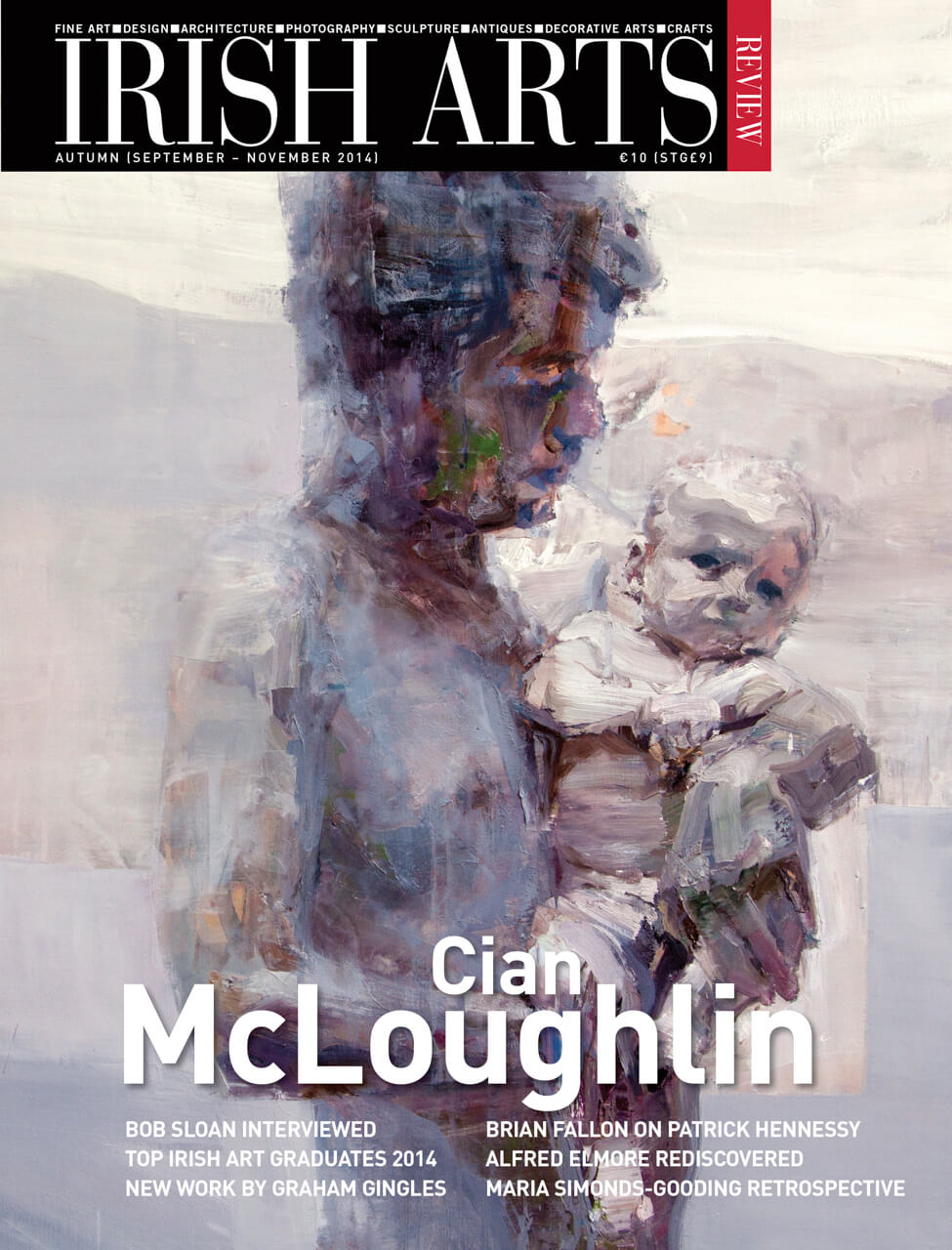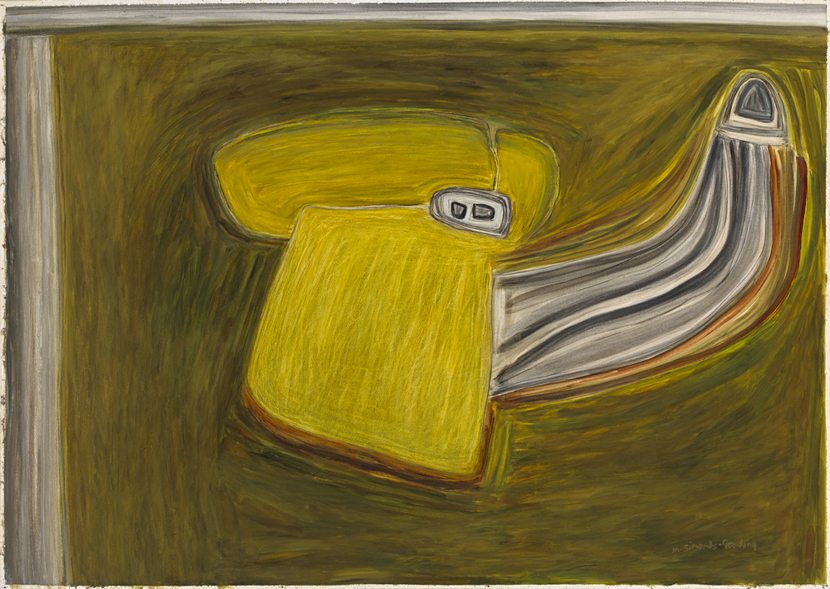

While his father made the Grand Tour, James Hamilton 2nd Earl of Clanbrassill preferred to stay at home and make improvements on his estates, the greatest of which is Tollymore, Co Down, writes Peter Murray
Depicting a man seated on a rock in a wooded landscape, holding the reins of a thoroughbred horse, George Stubbs’ 1765 study, Portrait of James Hamilton 2nd Earl of Clanbrassill with his bay hunter Mowbray, exudes an air of calm and polished authority (Fig 1). Both horse and rider are immaculately presented. The horse’s black mane and tail are carefully groomed, the saddle tightly bound with a cinch. Dressed in a dark blue hunting coat over a red and gold jacket, the 2nd Earl wears tan gaiters, laced at the knees, and riding boots. He holds a crop, his dark riding cap lies on the rock beside him. Enjoying a moment’s rest, Mowbray stands alert, neck taut, ears pricked, ready to be off again. Although he has dismounted, the Earl of Clanbrassill seems equally restless. Mouth downturned, and appearing older than his thirty-five years, he gazes out from the canvas, engaging the viewer in direct eye-to-eye contact. His expression is both interrogative and introspective, and speaks of someone who will brook no nonsense. A cousin of the 3rd Duke of Portland, one of Stubbs’ most important patrons, the 2nd Earl of Clanbrassill was one of the few Irishmen to have been painted by Stubbs. The painting was exhibited in 1765, and, up to its sale in Christie’s in December 2013, remained in the family for whom it had been painted, for over two hundred and fifty years. The sale was a success, with the painting fetching over £1.4 million sterling.
A more or less forgotten figure in Irish politics and society, James Hamilton, Viscount Limerick and 2nd Earl of Clanbrassill (1730-1798) is commemorated mainly in the Dublin thoroughfare that stretches from New Street near St Patrick’s Cathedral to Harold’s Cross. Fashionable enough in the 18th century, it later became one of Dublin’s less salubrious addresses, but has enjoyed a revival in recent times. James inherited the title from his father, also named James, who died in 1758, two years after being created Earl. His mother was Lady Harriet Bentinck, Countess of Clanbrassill, who after her husband’s death lived in Cypress Grove House in Templeogue; hence the eponymous street named after the family, as it led from Dublin city centre towards Templeogue. The Clanbrassill title had been in the family from the early 17th century, but on the death of Henry Hamilton in 1674 had become extinct. It was later revived for James’ father, who in 1689 had raised a regiment in support of William of Orange. Originally a Scottish family, the Hamiltons had settled first at Tollymore in Co Down, and in the late 17th century acquired lands around Dundalk. While their house at Dundalk has long since been demolished, and the demesne swallowed up by suburbs, the parklands and garden at Tollymore survive, very largely unchanged since the death of the 2nd Earl.
Having inherited estates worth three thousand pounds a year, a very considerable income in the mid-18th century, the 2nd Earl, an Irish peer, was Member of Parliament for Midleton in Co Cork in 1755, and High Sheriff for Louth three years later. Described by Mrs Delany as ‘Free from every vice in the world’ he was also a member of the English House of Commons. Unlike his father, who was diplomatic in his dealings with others, the 2nd Earl was stubborn and prone to depression. In a letter to his sister, Anne Hamilton in 1750, the Duchess of Leinster wrote, ‘I admired his person as I always did but don’t think him half so handsome with his hair curled up and powdered as it used to be formerly when it was quite wild and rough, not that I should like to have him wear it so now as I don’t like anything that is very particular in dress. As for his manner he is polite, well bred, influenced by others, a little shy.’1
For many years a bachelor, in 1774 the 2nd Earl married Grace Foley, daughter of Thomas Foley, 1st Baron Foley and the Hon. Grace Granville (Fig 2). Mrs Delany described him just before his marriage ‘He and I enter’d into a great deal of Irish talk; he looks old for his age, having lost all his fore teeth, but he is tall, genteel and very well bred, and the evening past very well.’2 There were no children from the marriage, and so after his death the Earl’s estates, including the paintings at Tollymore, passed to his only sibling, Anne, who had married Robert Jocelyn, later 1st Earl of Roden. Keeping alive the old family name, in 1821 Robert Jocelyn, MP for Co Louth was created Baron Clanbrassill. The following year, the Roden name was immortalized, in its own way, when Robert’s brother Percy, a Church of Ireland Bishop, was caught ‘in flagrante’ with a Grenadier Guard in a public house in London. The present Earl of Roden, Robert Jocelyn, has written a history of Tollymore, published in 2005 by the Ulster Architectural Heritage Society. He points out that the legacy of both Earls is to be found in the twenty-nine kilometers ‘of roadways, bridges, arboretum and plantations, and demesne buildings’ at Tollymore, a forest park now owned by the government in Northern Ireland and open to the public since 1955.
As the portrait by Stubbs confirms, the 2nd Earl was something of a dandy. A pastel portrait, dated 1774 by Jean-Etienne Liotard, depicts him as very much the Irish ‘milord’, red jacket trimmed with gold, wearing a grey wig, seated in a relaxed pose on a Chippendale chair. Unlike his father, who did the Grand Tour of Europe in 1716, the 2nd Earl appears to have preferred to stay at home. Liotard visited London twice, in 1753 and again twenty years later, the portraits of James and his wife Grace were most likely commissioned to commemorate their marriage. James’ father is listed by John Ingamells as one of the ‘milords’ who made the Grand Tour to Italy. In 1716 ‘James Hamilton hibernus’ is recorded in Italy, while an undated portrait of him by Francesco Trevisani, done in Rome around 1720, also survives in the family collection. Laid out in the 18th century, the gardens at Tollymore include a picturesque ‘hermitage’, a series of caves created in a cliff overlooking the river Shimna (Fig 6). Designed in the years after 1746 by the English landscape architect and polymath Thomas Wright (1711-1786), in collaboration with the 1st Earl, work on the gardens was carried on by the 2nd Earl, who had been tutored by Wright and was well-versed in the fine arts and architecture. A follower of William Kent, Wright created informal picturesque gardens that made the best of the natural features of the landscape. The estate at Tollymore was mapped by Bernard Scalé in 1760 and again seventeen years later (Fig 3). The latter map, a work of art in itself, shows trees planted in two styles; in the northern section straight avenues intersect at right angles, while in the western and southern sections, a more ‘natural’ asymmetrical planting of trees follows the lines of the riverbank. This contrast between axial regularity and assymetry again characterizes the best work of Kent.
The 2nd Earl contributed to the intellectual life of Ireland when along with Joseph Banks, Henry Ussher, Charles Vallancey and the Earl of Charlemont, his name appears, on 25 July 1785, amongst the founding members of ‘The Irish Academy’, forerunner of the Royal Irish Academy. Apart from these brief appearances, he remains an elusive figure. Created a Knight of the Garter in 1783 and appointed that same year a Knight Founder of the Order of St Patrick, a largely ceremonial body established in an effort to foster a unified national spirit in Irish politics and society, the 2nd Earl died on the eve of the Irish Rebellion of 1798. His greatest legacy without doubt is Tollymore, where demesne buildings such as the Barbican Gate (Fig 7), the Clanbrassill Barn (Figs 4&6), and Foley’s Bridge embellish what is one of Ireland’s great 18th-century gardens. In his foreword to the Earl of Roden’s book, the Knight of Glin wrote of the practical, as well as the aesthetic, achievements of the Earls of Clanbrassill: ‘The second earl had started the idea of reforestation on the remote hills and mountains of Ireland with a commercial coniferous woodland…By the 1830s, Tollymore was actively producing timber and large quantities were cut to any size and fit for any purpose.’ However, the Knight was equally impressed with the trees and natural history specimens brought to Tollymore from around the world, including magnolias from the Carolinas, shells from Antigua and cedars of Lebanon. The legacy of the two Earls is sufficient to attract visitors to Co Down, but taken along with Seaforde demesne, Mount Stewart, Cedarwood, Castlewellan and Grey Abbey, it is part of a remarkable heritage of garden design, readily accessible to the public and now widely appreciated and loved.
Acknowledgement: Robert Jocelyn, the Earl of Roden.
Peter Murray is Director of the Crawford Gallery of Art, Cork.
1&2 Tollymore: The Story of an Irish Demesne by the Earl of Roden (Ulster Architectural Heritage Series (2005) p. 47]



